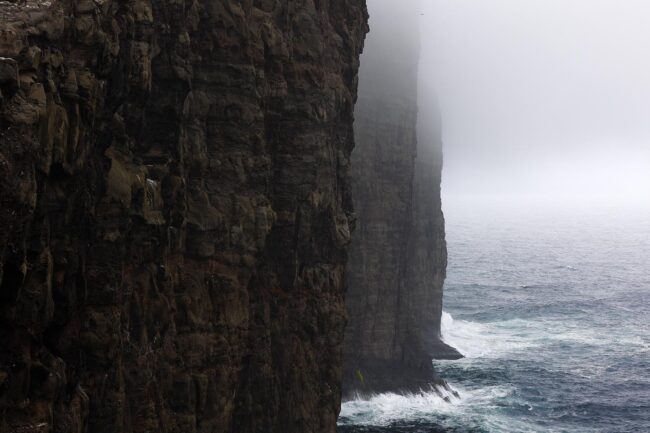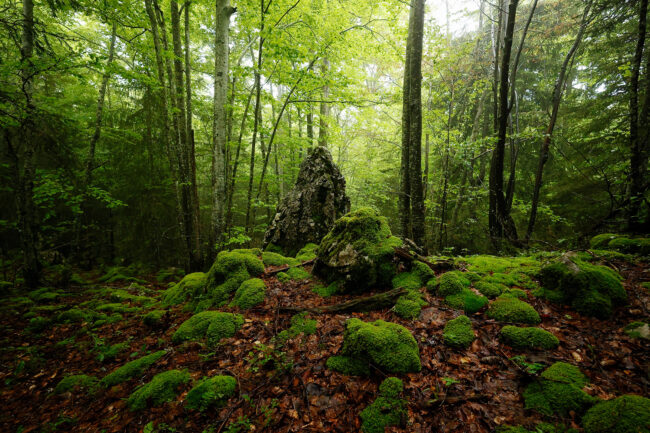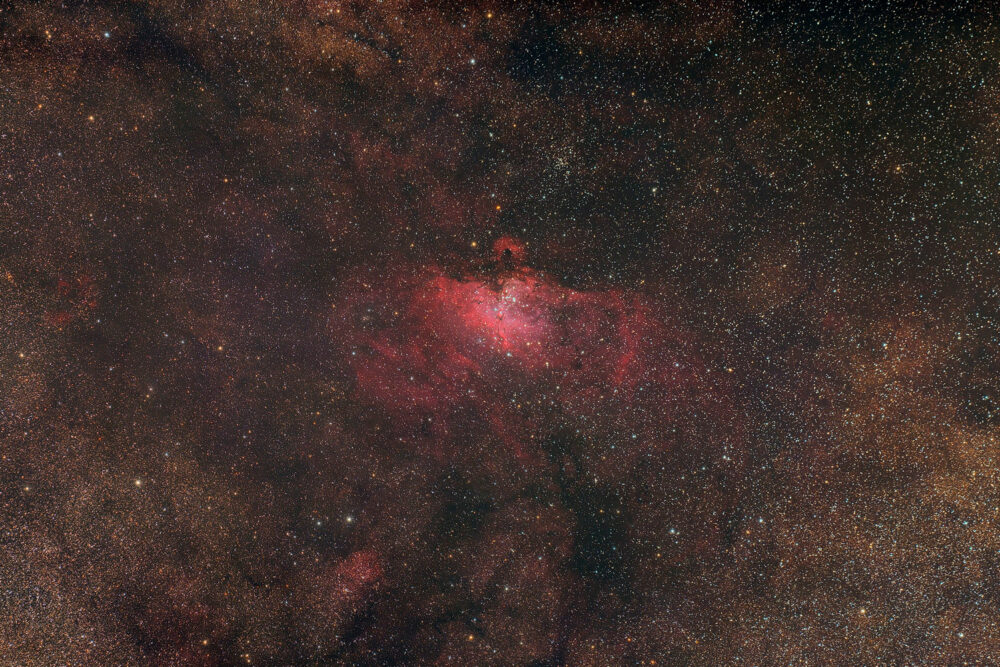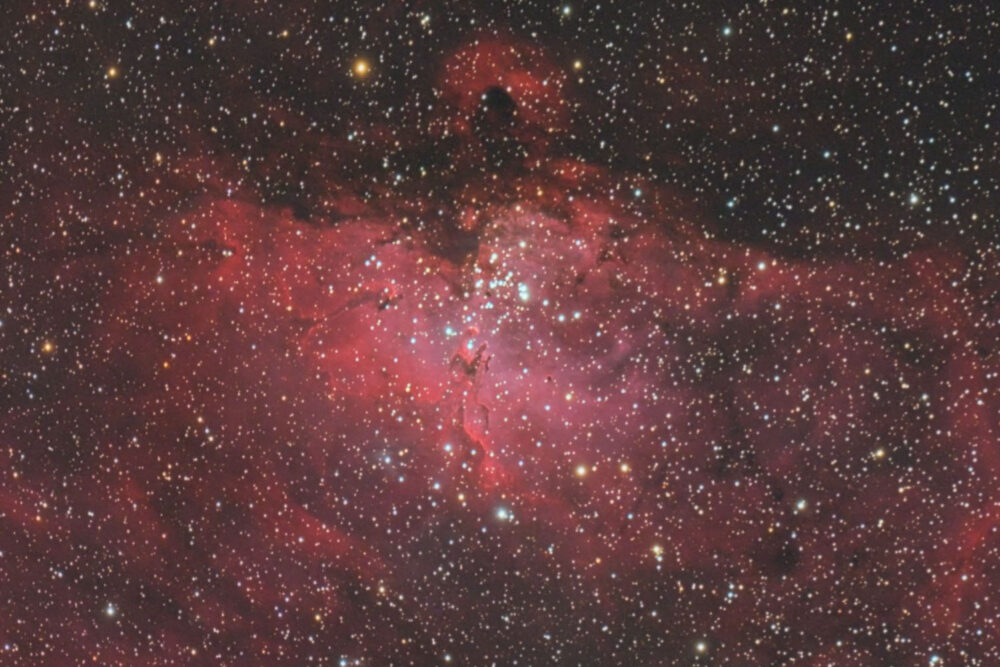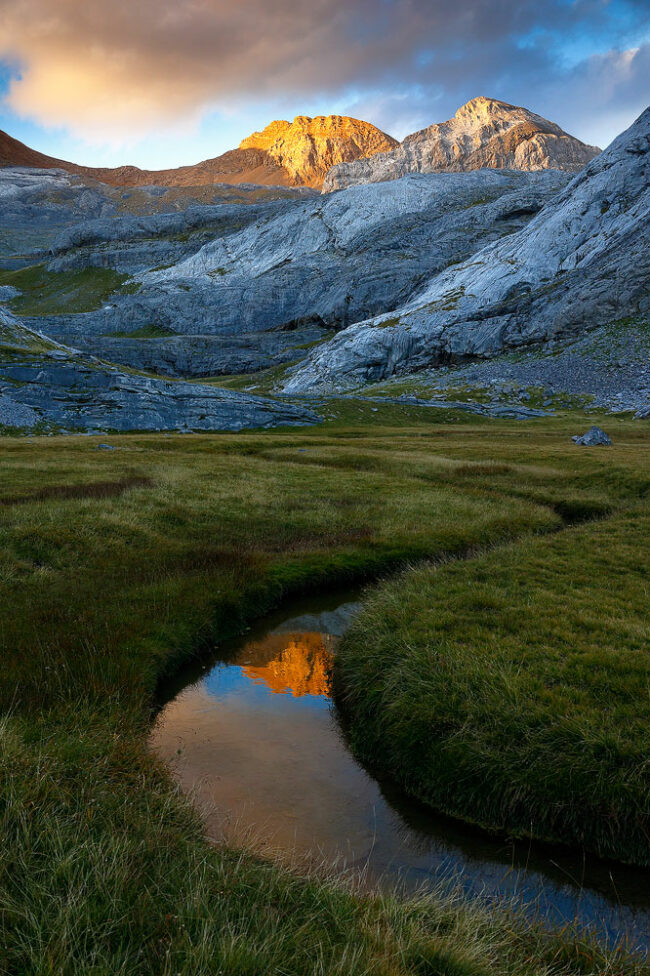Blog
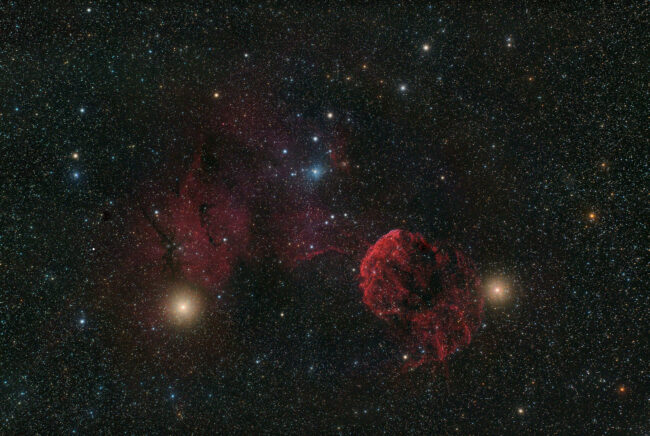
Clear and moonless sky for New Year’s Eve. I had to go out. The target was IC 443, a beautiful nebula in Gemini. A target I had already photographed in February 2023 but I didn’t remember it!
IC 443 is a supernova remnant that is believed to have exploded 30,000 – 35,000 years ago.
62 x 2 min
Camera : Nikon Z6 partially unfiltered
Telescope : Takahashi FSQ-106ED refractor.
Mount : ZWO AM5N.
Guiding : ZWO ASI290MM Mini on QHY OAG-M
Temperature : -3°C, -1°C
Humidity : 80%
SQM : 21.1
Software : acquisition with Astro Photography Tool, processing with PixInsight.
Location : Le Plan, Le Banchet
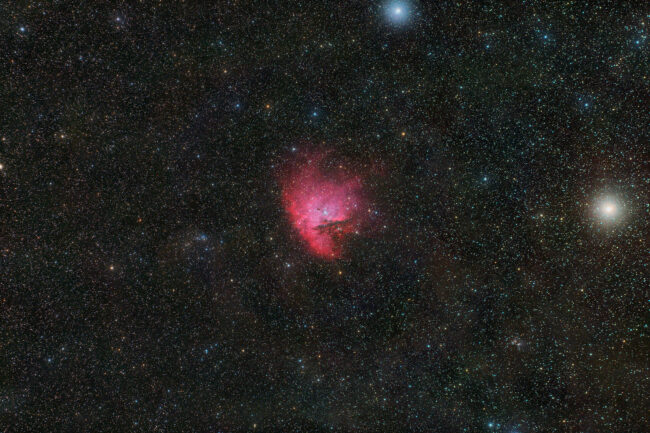
NGC 281 is a HII region, a cloud of ionized hydrogen, located in Cassiopeia. It is about 10,000 light-years from Earth with a diameter of 100 light-years. Its shape roughly resembles to Pac-Man, hence its name.
Acquired on December 28, 2024 for the production launch of my new ZWO AM5N equatorial mount which allows me to lighten the setup by 30 kg. A very appreciable weight saving in nomadic astrophotography!
54 x 2 min
Camera : Nikon Z6 partially unfiltered
Telescope : Takahashi FSQ-106ED refractor.
Mount : ZWO AM5N.
Guiding : ZWO ASI290MM Mini on QHY OAG-M
Temperature : 1°C
Humidity : 70%
SQM : 20.9
Software : acquisition with Astro Photography Tool, processing with PixInsight.
Location : Le Plan, Le Banchet
The Eagle Nebula is one of the classic summer observations near Sagittarius. It is located further north, in the constellation of the Serpens. M16 actually designates the open cluster in the center of the nebula which itself bears the designation IC 4703.
The central part became popular after the portrait made of it by the Hubble space telescope in 1995. It is a stars nursery, hence the somewhat high-sounding name as the Americans like Pillars of Creation
74 x 2 min
Camera : Nikon Z6 partially unfiltered
Telescope : Takahashi FSQ-106ED refractor.
Mount : Takahashi EM-200 homemade electronics.
Guiding : ZWO ASI290MM Mini on QHY OAG-M
Temperature : 13°C
Humidity : 70%
SQM : 21.6
Software : auto-guiding with PHD2, acquisition with Astro Photography Tool, processing with PixInsight.
Location : L’Epine
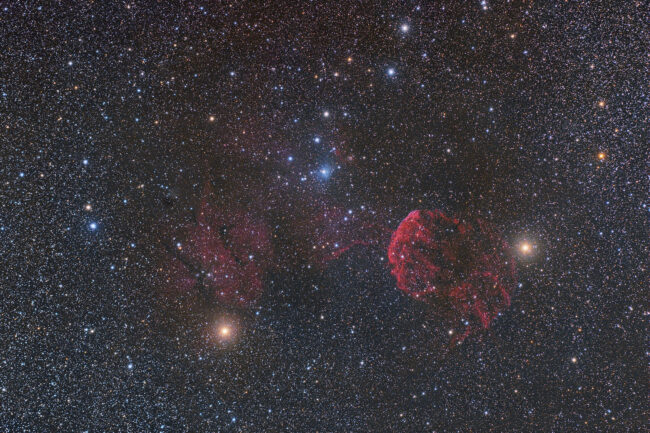
It’s a supernova remnant in the constellation Gemini. I did not know her before making the photo.
27 x 2 min
Camera : Nikon Z6 partially unfiltered
Telescope : Takahashi FSQ-106ED refractor.
Mount : Takahashi EM-200 homemade electronics.
Guiding : ZWO ASI290MM Mini on QHY OAG-M
Temperature : 3 to 1°C
Humidity : 85% to 100%
SQM : 21.2
Software : auto-guiding with PHD2, acquisition with Astro Photography Tool, processing with PixInsight.
Location : L’Epine
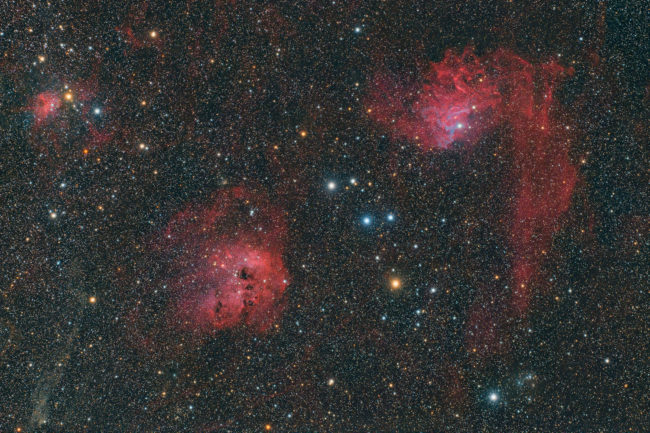
From left to right, or from smallest to largest:
– IC 417, the small Spider Nebula
– IC 410, the Tadpoles
– IC 405, the Flaming Star Nebula
Shot on December 31, 2021, about an hour before we change the year. And that’s the only deep sky image of the year, a crappy weather year.
65 x 1 min
Camera : Nikon Z6 partially unfiltered
Telescope : Takahashi FSQ-106ED refractor.
Mount : Takahashi EM-200 homemade electronics.
Temperature : 7°C
Humidity : 65%
SQM : 21.0
Software : acquisition with Astro Photography Tool, processing with PixInsight.
Location : Le Plan, Col du Banchet
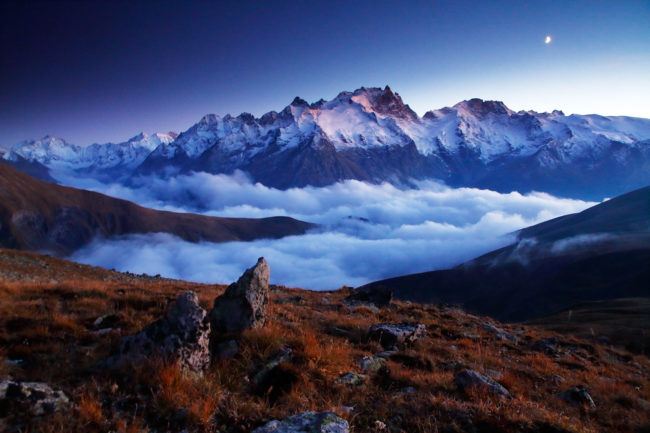
The cloud ceiling settled over the Grenoble area at the end of the morning and is not willing to move. According to the webcams, it is located around 2000-2100m altitude. So above the Vercors. We won’t be able to enjoy the fog in the forest or the sea of clouds. As for the Oisans, it is rather the opposite. The morning clouds dissipate announcing a storm of blue sky.
I decide to go to Oisans. The goal is always to have a good time in the mountains, photography is secondary.
Clouds begin to form in the late afternoon. The golden hour is coming, the hour before sunset. But the light remains harsh with strong contrasts. The Sun passes through high altitude clouds before setting, there will be no beautiful colors. Too bad, it won’t be for this time. It is still so good to be here, in this beautiful place, discovering a new view on this summit that I know so well.
Oh wait! After the sunset there is the blue hour, maybe something will happen again. The clouds are well up, it’s a real tide now. There are still glimmers of light in the mountains and the moon is starting to come down into the frame. Finally, everything lines up…
Well, except that it’s late, the exposure times are getting a little too long and I don’t have the right tripod. And then I have to go back down the steep grassy slope with the headlamp and almost through the fog! Everything went well. It was Sunday evening.
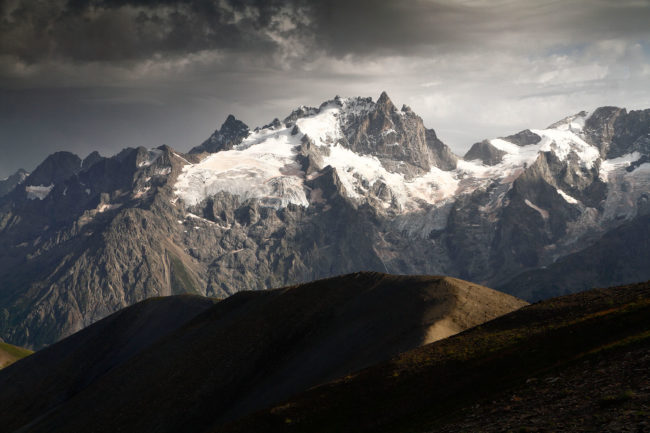
After a long ascent which will end in a nasty scree, I walk quietly on this ridge. The grassy slopes have given way to a lunar terrain. The scenery all around is grandiose. There is no path here. To get there, you have to know the area. And it gives the feeling of being privileged, I imagine that few people pass by here.
I am in the sun. Clouds are coming in from the west. They seem to have decided to blend together over the Ecrins to form a very dark ceiling. The Meije keeps its white dress in the light.


